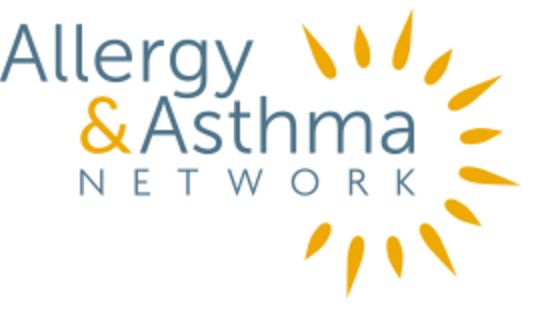Common myths about spring allergy season
Allergies affect as many as 60 million people in the United States every year. There are 7 million doctor’s office visits every year due to allergy symptoms. Given how common seasonal allergies are, it is easy to understand why there are a lot of myths about spring allergies and how to manage seasonal allergy symptoms. Let’s explore some of the most common myths about spring allergies.
Why are my allergies so bad in spring?
It’s the number one question we are asked when it comes to allergy season.
Is it spring and you have a runny nose, nasal congestion, sore throat, or red, itchy, and watery eyes? Are you coughing and sneezing? These types of allergic reactions are typical for people with spring allergies.
A person with an allergy has an overactive immune system. For people with allergies, exposure to a typically harmless substance (a “trigger) causes an allergic response. Common allergy triggers include pollen, mold, pet dander and dust mites.
For people with spring allergies, the primary trigger is usually pollen. During spring, tree pollen and grass pollen are released into the air causing the pollen count to rise. Breathing in pollen or mold spores can trigger spring allergy symptoms. Outdoor mold is also a common spring allergy trigger.
For those who have seasonal allergies, the bad news is that the spring allergy season is getting longer and more severe.
Common myths about spring allergy season
Allergies affect as many as 60 million people in the United States every year. There are 7 million doctor’s office visits every year due to allergy symptoms. Given how common seasonal allergies are, it is easy to understand why there are a lot of myths about spring allergies and how to manage seasonal allergy symptoms. Let’s explore some of the most common myths about spring allergies.
Myth: I only need to take my allergy medication when I’m feeling really bad.
Fact: Most allergy medications work best if taken daily, beginning about 1-2 weeks before your allergy season starts. When the medicine is already in your body, it can work more effectively when you are exposed to an allergen. So managing grass pollen allergy or other spring allergy symptoms means understanding the timing of your allergy symptoms. That allows you to start your medicine early.
We developed a helpful weather tool. This will help you monitor the pollen count in your community. By understanding when the pollen count is on the rise, you can more effectively plan when to start medications for your symptoms.
Myth: Moving to a drier climate – the U.S. Southwest, for example – will cure my spring allergies.
Fact: There really is no allergy-free zone. Pollen allergies can occur anywhere. Deserts have plenty of plants that produce pollen, such as sagebrush, cottonwood and olive trees. When the pollen count is high, you may experience symptoms.
Relocating may offer temporary relief. But allergies to local plants could develop before long. The timing of your seasonal allergies and your allergic symptoms may vary in a different climate, but they may not vanish altogether. So, before you consider moving to help manage your pollen allergies, talk to a healthcare professional about treatment options. Travel may also affect your allergies, so read about our tips for spring travel.
Myth: Allergy medications make me sleepy, so I just tolerate my symptoms because there’s nothing I can do to stop them.
Fact: Non-sedating allergy medications are available and effective for relieving symptoms. These include some antihistamines and corticosteroid nasal sprays. Many people also find effective relief from nasal washes. If you purchase a medication over the counter, read and follow the dosing and safety instructions printed on the medication label.
Talk with an allergy specialist about treatment options, including allergy shots. There is no reason to suffer when there are lots of different choices for treating allergy symptoms.
Myth: All I need to control my allergies indoors is an air cleaner.
Fact: An air cleaner or purifier will only remove allergens floating in the air. They do nothing for pollen and mold spores on your clothes, shoes, or hair that you bring in from outside.
Air cleaners are one part of an overall strategy to reduce allergens indoors. Keeping windows shut when pollen counts are high is essential. Showering after being outside, and regular dusting and vacuuming may also help control allergy symptoms.
Myth: I’ve never had allergies before, so this runny nose must be a cold.
Fact: You can develop new allergies at any time, even as an adult. Are your eyes, nose and throat are itchy? Do you have a stuffy nose, inflamed nasal passages, or a runny nose with clear and thin nasal drip? Have your symptoms lasted more than two weeks? These are signs of seasonal allergies or allergic rhinitis. See an allergist for testing and to discuss treatment options, including allergen immunotherapy.
Spring allergies can really zap the joy out of spring. During the COVID-19 pandemic, even a runny nose can have you wondering if you have seasonal allergies or COVID-19. Understanding the myths surrounding spring allergies can help you control your spring allergies — rather than spring allergies controlling you.
Reviewed by:
Don Bukstein, MD, FACAAI, is a board-certified allergist and immunologist and pediatric pulmonologist. He serves as Medical Director for Allergy & Asthma Network. He also volunteers at a Medicaid clinic in inner city Milwaukee. He is the former Director of Allergy and Asthma Research at Dean Medical Center in Madison.
© 2021 Allergy and Asthma Network

Last updated : 3/22/2022